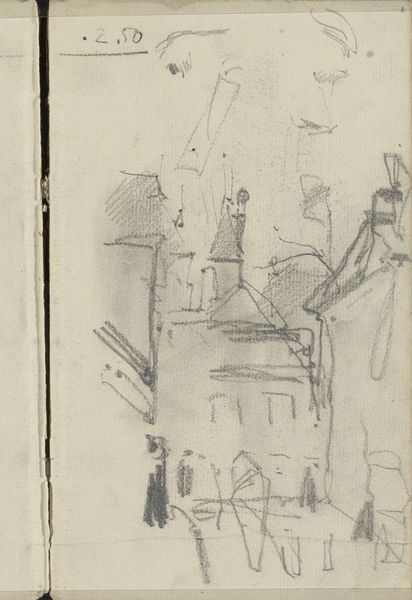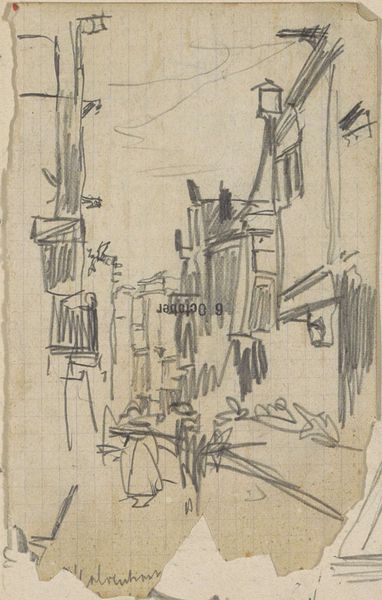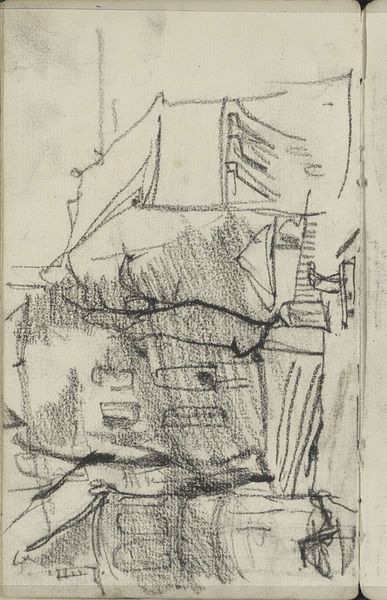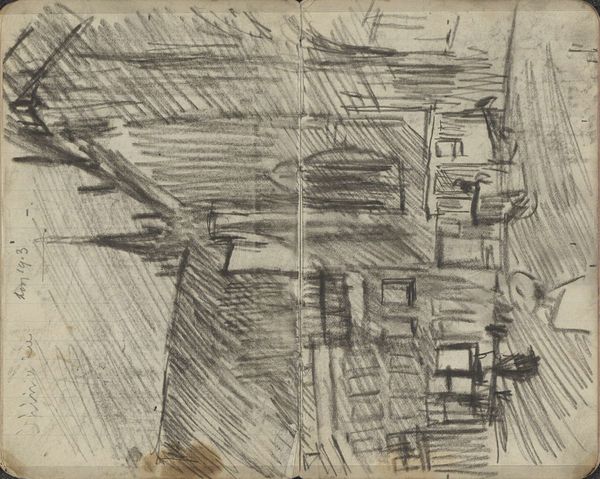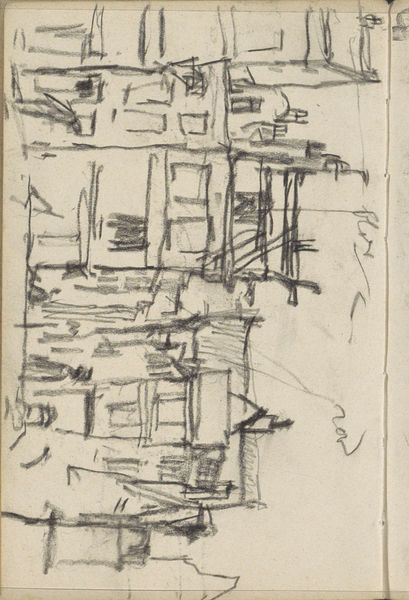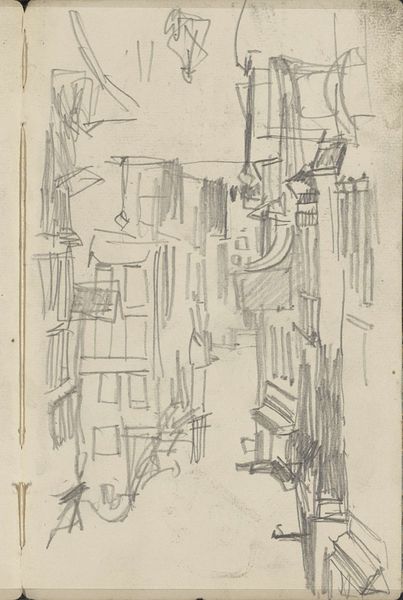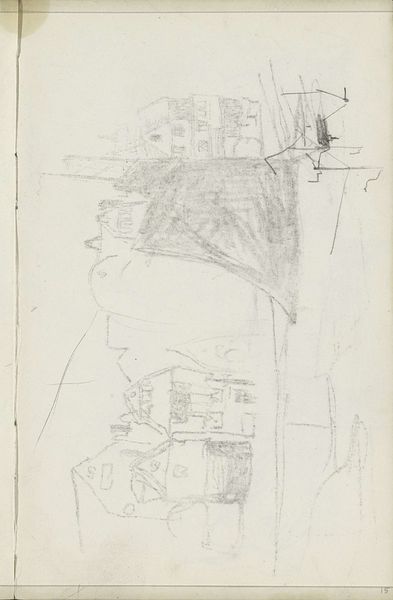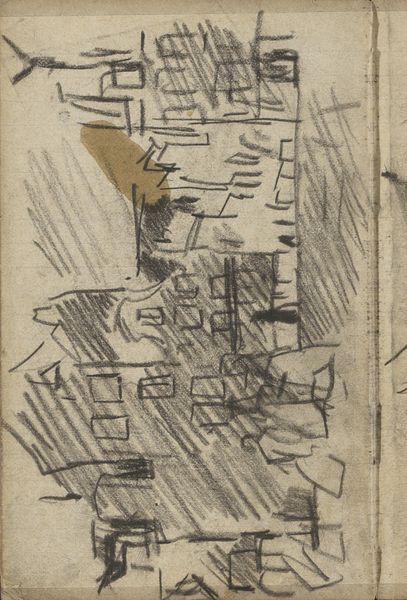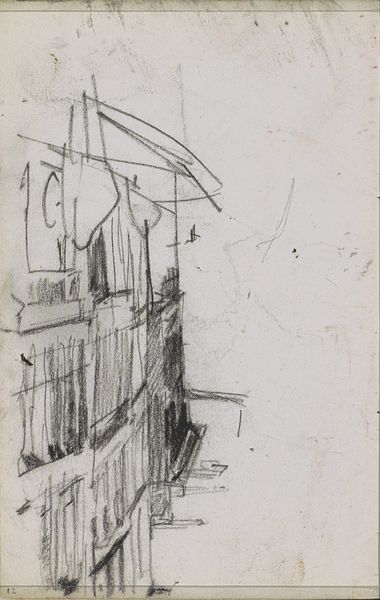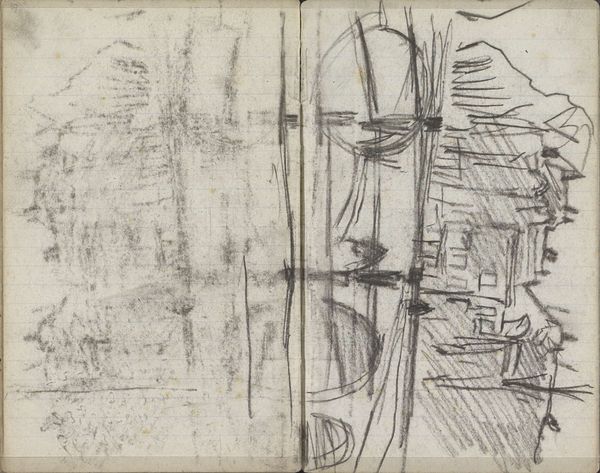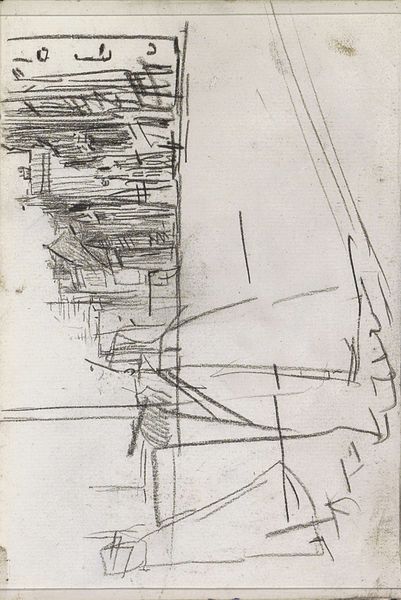
Gezicht op het Damrak te Amsterdam met de toren van de Oude Kerk c. 1894
0:00
0:00
georgehendrikbreitner
Rijksmuseum
Copyright: Rijks Museum: Open Domain
Curator: At first glance, this work by George Hendrik Breitner almost appears as a blurred cityscape seen through rain-streaked glass. The pencil strokes are so fluid. Editor: Indeed, there is something quite immediate about the marks on display in "Gezicht op het Damrak te Amsterdam met de toren van de Oude Kerk." It dates circa 1894 and offers an intriguing, almost sociological snapshot of Amsterdam through an impressionistic lens. Curator: Yes, look closely at how the lines build these structures and create spatial depth with such economical use of graphite on paper. Breitner captures the essence of the architecture but, notably, forgoes many concrete details, offering instead pure shapes. Editor: Breitner’s focus was often the life of the working classes. He positioned himself, camera and sketchbook in tow, amidst the hustle of Amsterdam’s streets and in brothels. It’s hard not to see the impact of increasing urbanization on the lives of ordinary Amsterdammers within this hasty depiction. Curator: I'd argue his focus goes well beyond documenting social change. Look at how the texture of the graphite changes across the composition! Observe, too, how those quick marks, while seemingly haphazard, manage to cohere in distinct blocks suggesting buildings and an iconic tower. The vertical orientation, set against horizontal ruled notebook lines, creates fascinating structural tensions. Editor: His method can definitely read as intentionally disengaged. Perhaps a conscious resistance towards glorifying urbanization. Breitner captured moments lived by those largely excluded from conventional paintings of city life. In a way, it's as if the image reflects the fragmentation of lived experience amidst modernization. Curator: An interpretation which resonates, undeniably! Although, as I continue looking, I discern his artistic commitment to the visible and tangible qualities of a given location at a certain moment in time. A city can itself become raw material for purely formal innovation. Editor: Ultimately, regardless of Breitner’s specific intent, it certainly invites contemplation on the relationship between observer, observed, and the city that envelopes them both. Curator: I agree wholeheartedly! This fleeting capture serves as both document and study in formalist composition—such brilliant complexity achieved through such simplistic strokes.
Comments
No comments
Be the first to comment and join the conversation on the ultimate creative platform.
